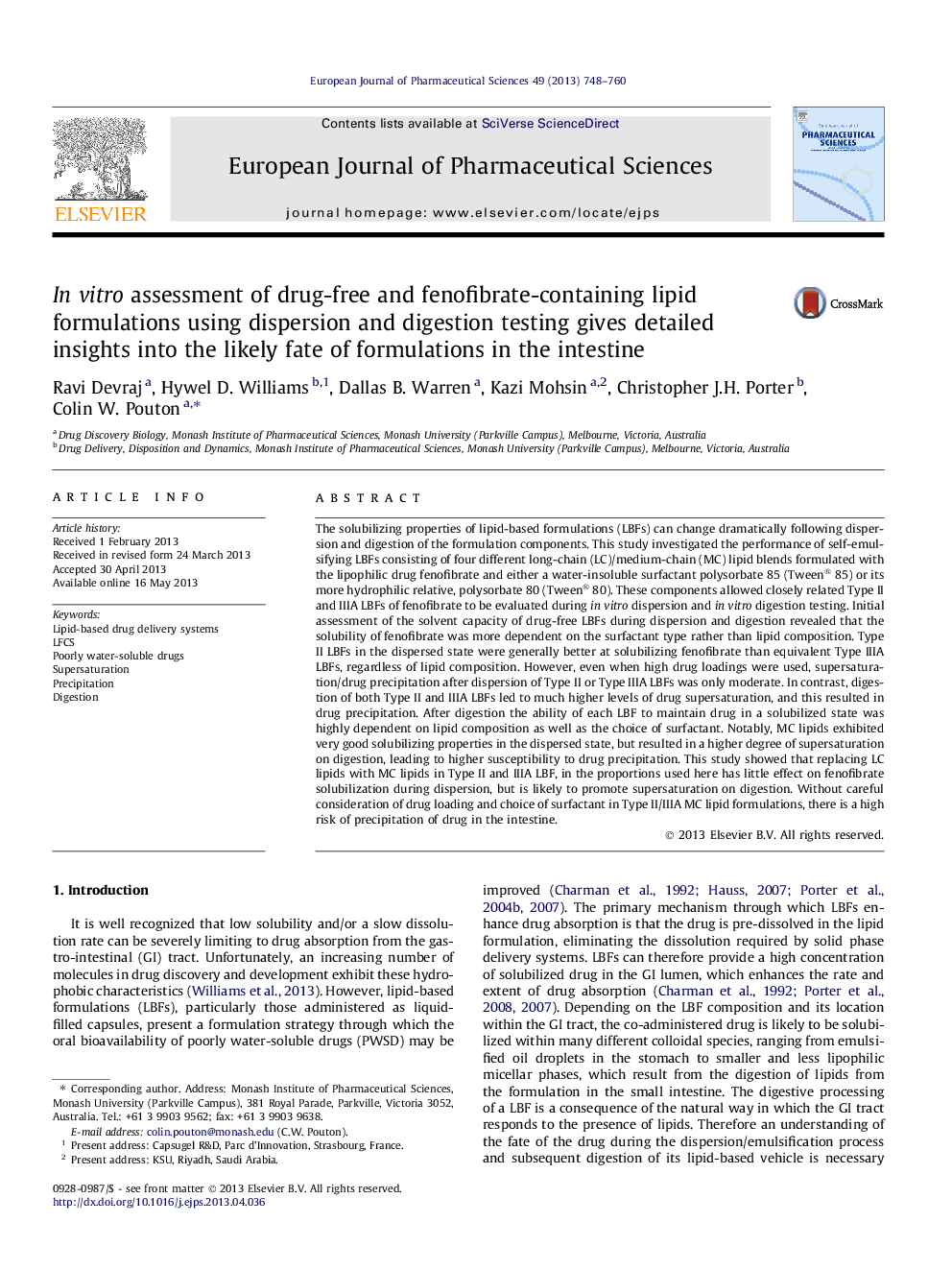| کد مقاله | کد نشریه | سال انتشار | مقاله انگلیسی | نسخه تمام متن |
|---|---|---|---|---|
| 2480867 | 1556206 | 2013 | 13 صفحه PDF | دانلود رایگان |

The solubilizing properties of lipid-based formulations (LBFs) can change dramatically following dispersion and digestion of the formulation components. This study investigated the performance of self-emulsifying LBFs consisting of four different long-chain (LC)/medium-chain (MC) lipid blends formulated with the lipophilic drug fenofibrate and either a water-insoluble surfactant polysorbate 85 (Tween® 85) or its more hydrophilic relative, polysorbate 80 (Tween® 80). These components allowed closely related Type II and IIIA LBFs of fenofibrate to be evaluated during in vitro dispersion and in vitro digestion testing. Initial assessment of the solvent capacity of drug-free LBFs during dispersion and digestion revealed that the solubility of fenofibrate was more dependent on the surfactant type rather than lipid composition. Type II LBFs in the dispersed state were generally better at solubilizing fenofibrate than equivalent Type IIIA LBFs, regardless of lipid composition. However, even when high drug loadings were used, supersaturation/drug precipitation after dispersion of Type II or Type IIIA LBFs was only moderate. In contrast, digestion of both Type II and IIIA LBFs led to much higher levels of drug supersaturation, and this resulted in drug precipitation. After digestion the ability of each LBF to maintain drug in a solubilized state was highly dependent on lipid composition as well as the choice of surfactant. Notably, MC lipids exhibited very good solubilizing properties in the dispersed state, but resulted in a higher degree of supersaturation on digestion, leading to higher susceptibility to drug precipitation. This study showed that replacing LC lipids with MC lipids in Type II and IIIA LBF, in the proportions used here has little effect on fenofibrate solubilization during dispersion, but is likely to promote supersaturation on digestion. Without careful consideration of drug loading and choice of surfactant in Type II/IIIA MC lipid formulations, there is a high risk of precipitation of drug in the intestine.
Figure optionsDownload high-quality image (176 K)Download as PowerPoint slide
Journal: European Journal of Pharmaceutical Sciences - Volume 49, Issue 4, 16 July 2013, Pages 748–760